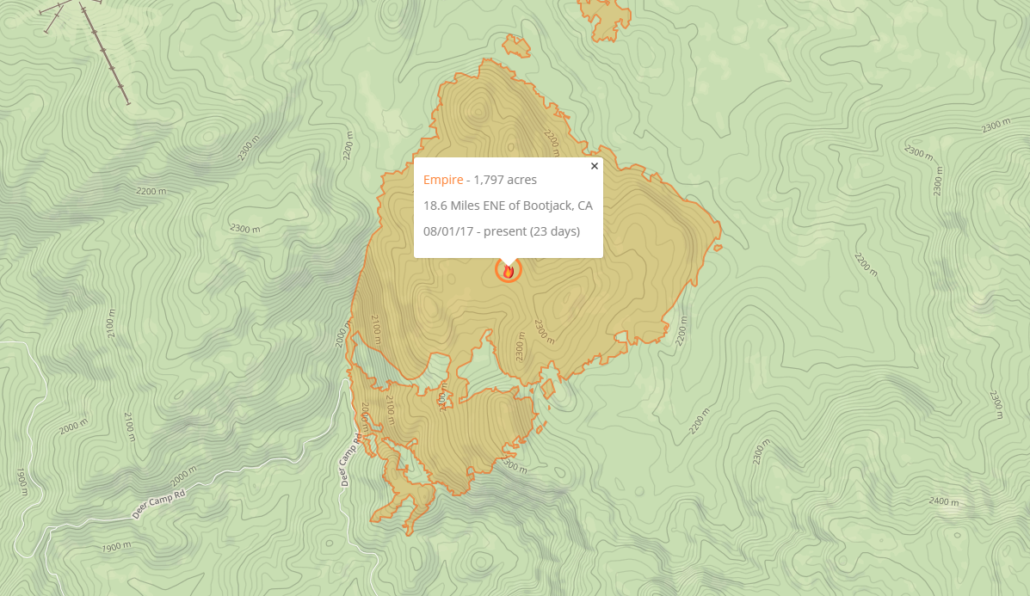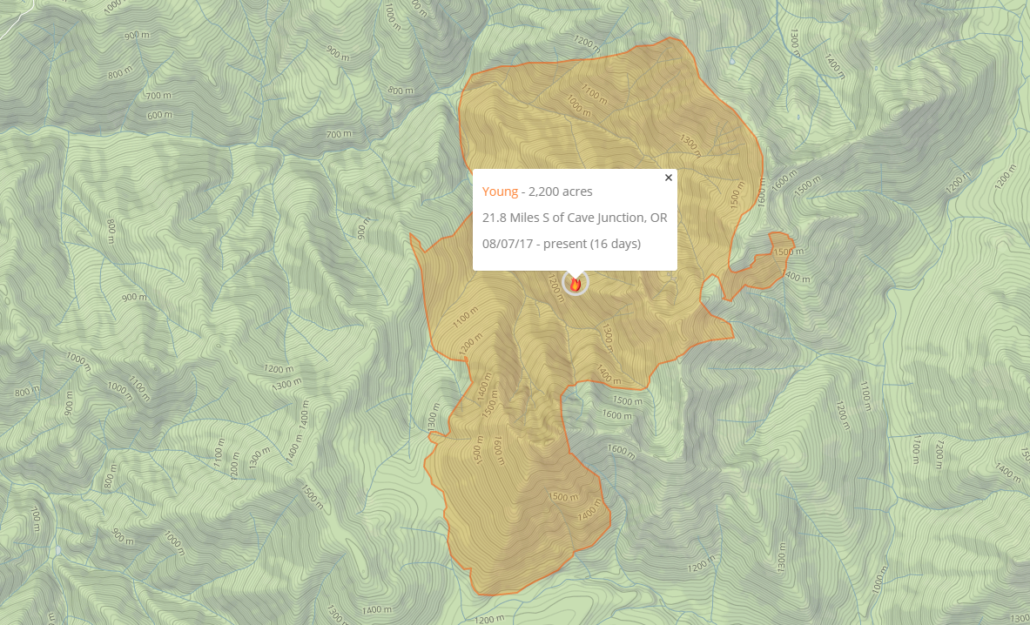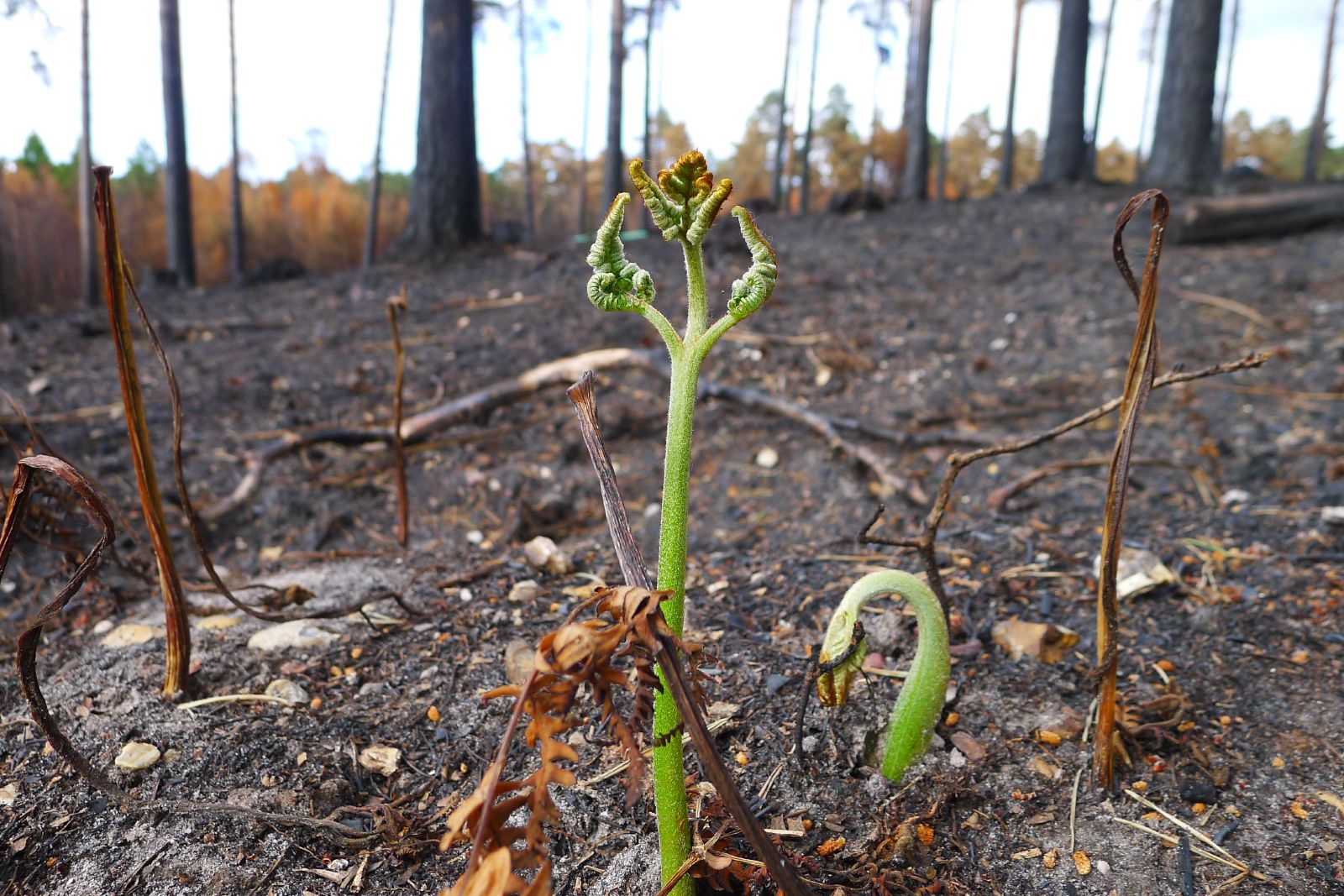Not every naturally occurring wildland fire is actively suppressed. Naturally occurring wildland fires are normally caused by lightening strikes in areas with fallen trees and other dry accumulated fuels. Under certain circumstances, some wildland fires will be allowed to actively burn in order to help clear these fuels and promote forest health. When a wildland fire is allowed to burn within a pre-defined area to achieve a resource or protection objective it is referred to as a Fire-Use Wildfire. A fire-use fire is different from a prescribed fire in which firefighters intentionally set fires to achieve similar objectives. In addition, federally mandated guidelines state that every human-caused wildland fire will be suppressed and will not be managed for resource benefits. Additionally, once a wildland fire has been managed for suppression objectives, it may never be managed for resource benefit objectives. In other words, a wildland fire must either be suppressed or used for a resource/protection objective but not both.
The Departments of Interior and Agriculture, together with tribal governments, state governments, and local jurisdictions, have the responsibility for protection and management of natural resources on public and Indian Trust lands in the United States. A wildland use fire is one option available to Federal agencies that have an approved land use plan and need to achieve a resource or protection objective. Contributing factors that help steer a fire managers decision-making process are often incident specific. Location, available resources, predicted weather, topography, air quality, and predicted fire behavior are all factors that contribute to fire management decisions.
If a fire is located in remote, steep, rugged or highly inaccessible terrain and people are not threatened, managing the fire as a wildland use fire to meet a protection objective may be more appropriate and can help avoid putting firefighters in unnecessary danger. A wildland use fire can meet resource objectives like helping to maintain healthy forests by supporting a diverse ecosystem. Some wild plants and trees even need fire in order for their seeds to germinate. A carefully monitored wildland use fire can also help reduce naturally occurring fuels accumulation, which could lead to an even bigger wildfire if left unchecked.
Current Large Fire-Use Wildfires
Empire Fire – Yosemite National Park – 1,797 acres

The Empire Fire burning near Yosemite National Park was caused by lightening and is being managed to promote the health of the ecosystem and protective objectives.
Young Fire – Six Rivers NF & Siskiyou Wilderness – 2,200 acres

Sources
https://www.fws.gov/fire/what_we_do/wildland_fire_use.shtml
https://www.nps.gov/fire/wildland-fire/learning-center/fire-in-depth/ecology.cfm
https://www.sciencedaily.com/releases/2016/07/160705141437.htm




